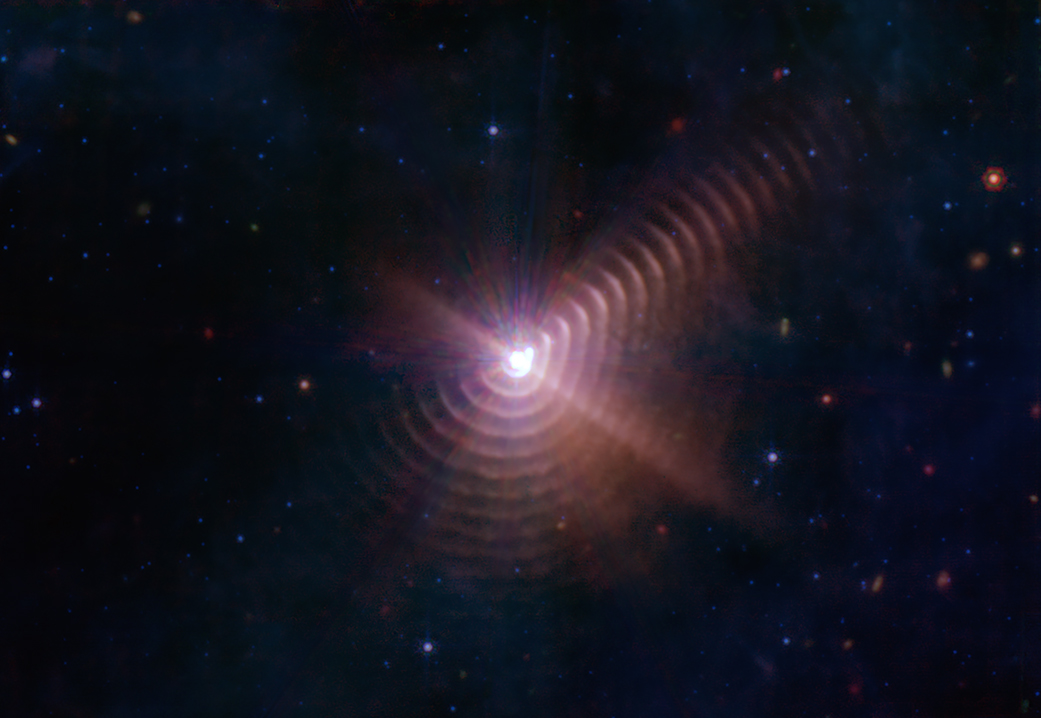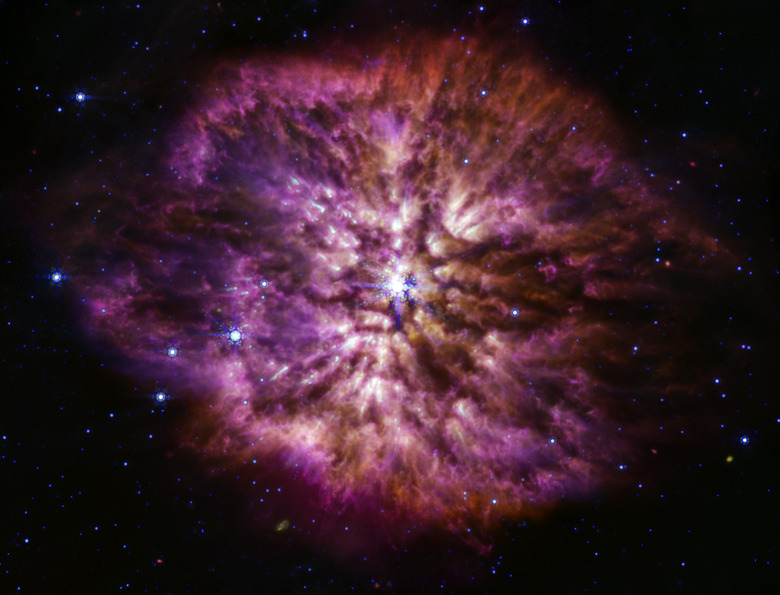Webb Telescope Captures Stunning Image Of Star On The Verge Of A Supernova
In June 2022, NASA's James Webb Space Telescope took its first look into the universe, offering beautiful details in Webb's first images. Other observations captured during those opening moments include a spectacular look at Wolf-Rayet 124 — a hot star riding on the verge of a supernova.
Wolf-Rayet 124, or WR 124, is 15,000 light-years from Earth in the constellation Sagitta. This beautiful image of the star as it is on the verge of a supernova showcases how the evolution of a star like this differs from others.
As massive stars race through their lifecycles, only some will go through what astronomers call a Wolf-Rayet phase. During this phase, the stars are on the verge of a supernova, constantly casting off their outer shell. This process creates the iconic halos of gas and dust around them. These halos are quite breathtaking, and we have even seen the dust create what appears like a fingerprint in space.

What makes these observations of Wolf-Rayet 124 and other stars like it so important is that they provide astronomers with much-needed data to learn more about this rare star phase. Because not all stars enter this phase, astronomers haven't been able to gather tons of data regarding it. But, if we can get that data, we can better understand what happens to these stars when they are on the verge of a supernova.
It's an intriguing bit of exploration and observation, and you have to admit, it makes for some amazing-looking spectacles out in space. That being said, James Webb offers an unprecedented way for astronomers to study these stars while on the verge of their supernova phase. By looking through the dust and gas created as they cast off their outer shells, Webb can detect more than we've ever been able to detect in the past.
That alone could help us advance our understanding of star formation and evolution by light years, no pun intended.
